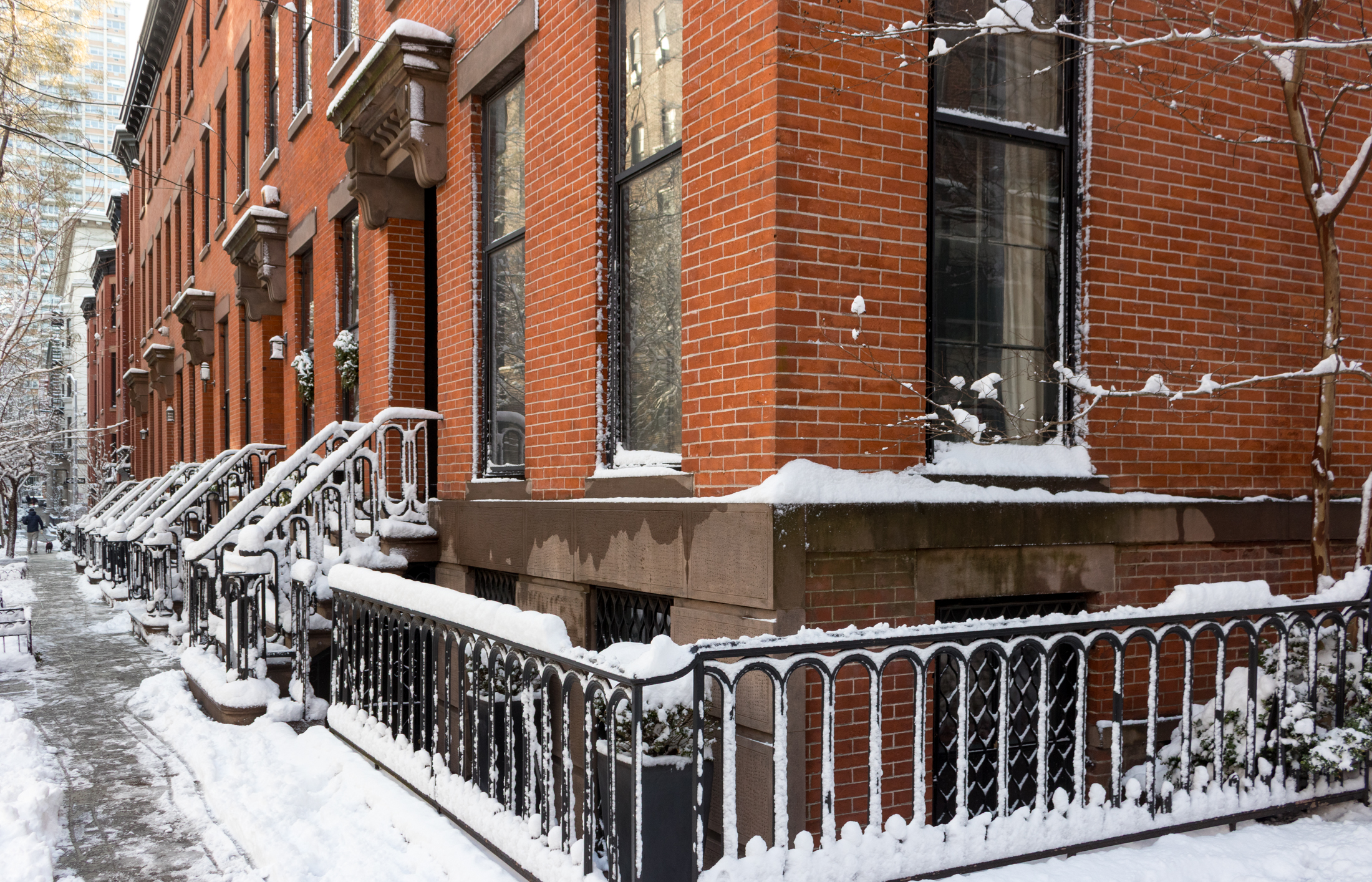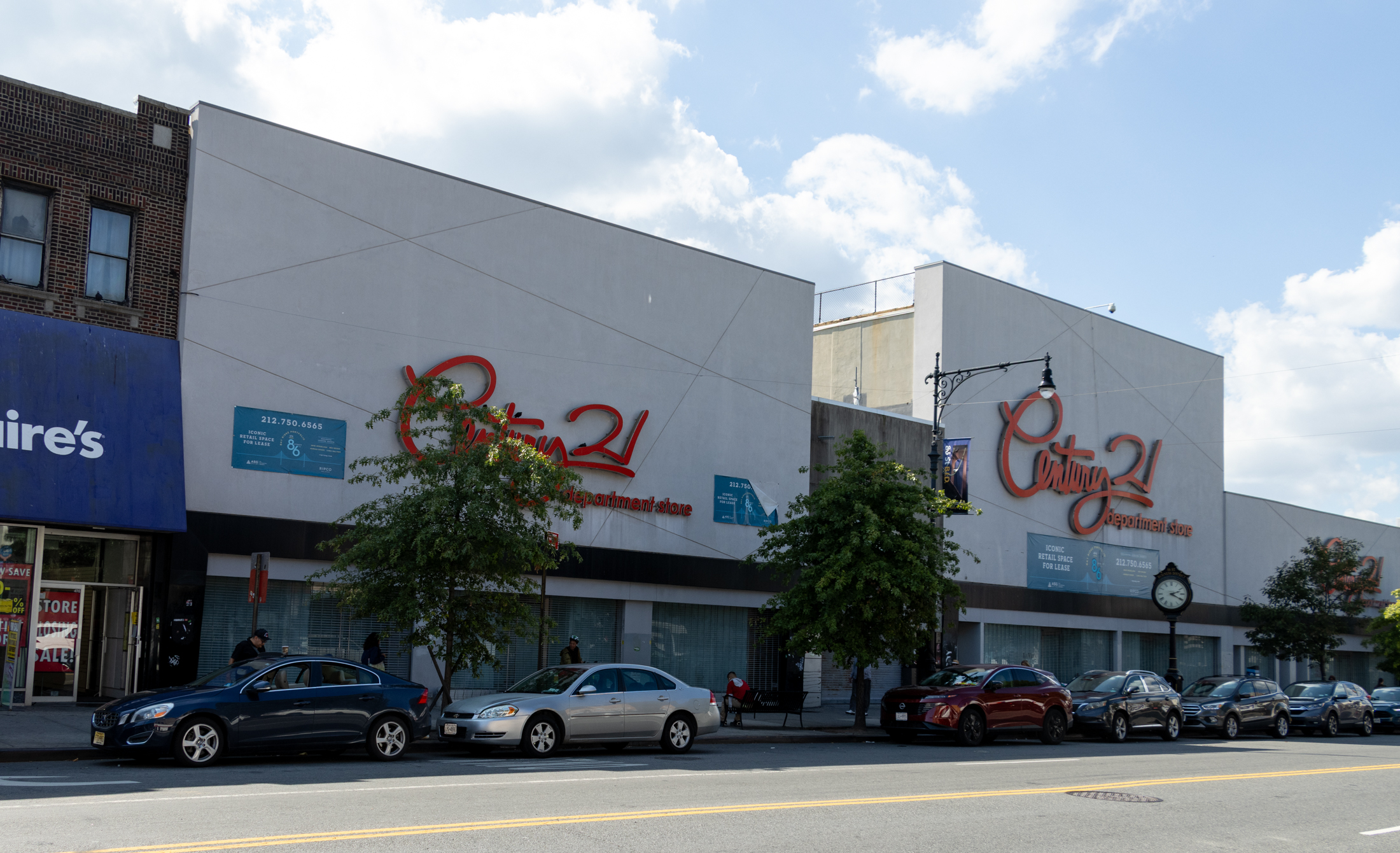Marty and Mayor Deal Death Blow to B'kln History
Selling the public a giant shovel-ful of b.s., Brooklyn Navy Yard Development Corp. President and CEO Andrew Kimball yesterday claimed that he has”no option” but to tear down the ten historic residences for naval officers that line Flushing Avenue at the Southwest corner of the yard. The buildings, which were built between 1858 and 1901,…


Selling the public a giant shovel-ful of b.s., Brooklyn Navy Yard Development Corp. President and CEO Andrew Kimball yesterday claimed that he has”no option” but to tear down the ten historic residences for naval officers that line Flushing Avenue at the Southwest corner of the yard. The buildings, which were built between 1858 and 1901, will be replaced by a 60,000-square-foot supermarket and a 300-car parking garage. Not everyone agrees with Kimball’s analysis. “[Preserving Admirals Row] is definitely doable and worth doing,” said New York Landmarks Conservancy official Alex Herrera. “They’re really a part of Brooklyn and Brooklyn’s history.” In another betrayal of Brooklyn’s heritage, Marty Markowitz joined Mayor Bloomberg in hailing the forces of progress: “A crucial community resource must take priority over preservation at Admirals Row.” Marty better hope he just won a lot of new votes from residents of the Farragut Houses (the most likely patrons of the supermarket) because he sure as hell just lost a lot of support among Brooklynites who care about preserving the borough’s history.
Addendum: Marty’s office contacted us to clarify that Navy Yard officials make all decisions regarding Admirals Row, and that he was simply stating his priorities in the Daily News article. He also pointed out his efforts to restore the historic Loew’s Kings theater in Flatbush and to preserve the character of Coney Island, including the Parachute Jump, as it is revitalized.
Admirals Row Sunk [NY Daily News]
Brooklyn Navy Yard Expansion Begins [NY Times]
Admirals Row [Historic Fort Greene]
Photo by D.K. Holland





Even though I’m a staunch preservationist, in this case I have to say a compromise would be the best thing to do: build a supermarket, but incorporate the existing structures, as many (smart) people have already proposed on here. As heartbreaking as it is, total preservation would be prohibitively expensive, and then what? They’d try to sell them as expensive homes to the type of families who spend $10 mil on a Park Slope brownstone. Except none of them would ever buy a place next to a housing project (not unless the Tea Lounge opened up a new branch there- zing!) You can’t exactly imagine them pushing their Bugaboo Frog strollers along Flushing Ave, can you?
I’m surprised no one has mentioned the preservation of Chelsea Market as an example of how to develop a historic structure responsibly. I’m lucky enough to work there and I am always heartened by the the preservation that was done there. It’s as interesting a piece of architecture as any of these sterile glass-and-steel buildings in the city.
P.S. Does anyone have good walking directions on how to get to Admiral’s Row if I want to take a look at the houses before the wrecking ball comes in? I’m a Greenpointer so I’m not too familiar with the area- could I take the G to Flushing? Many thanks.
So, Anon 2:51, are you saying that because you don’t see the houses going for luxury condos, the place is not worthy of preservation? What an elitist attitude! Not everything good or worthy is reserved for the rich. Historic buildings can be, and have been renovated for use by everyone from the homeless to low income, mid income to high end. It may take more effort to get funding for some projects over others, but it is possible, and not only that, is necessary. If you teach people that anything historical is not for them, because they aren’t good enough, you are well on the road to a civilization’s distruction. History belongs to everyone.
Your comment reminds me of a heated thread here some time ago regarding whether or not the people in these very same projects “deserve” to live in an area with a great view. Thank goodness we have not yet reached the science fiction world where the poor and undesirable all live underground or beneath the gleaming towers of the rich, although sometimes it seems we are well on the way.
The zoning laws probably require that many parking spaces, since the proposed mega store is so mega. Just don’t build such a huge store, and try and not destroy all the buildings. If this site is near the 69 bus, then have more 69 busses during the busiest shopping hours and people could take the bus if they pick up a few bags of groceries.
Why everything has to be so car-centric is beyond me. The thought should be for public transit, bike and walking paths and then cars as the last thing, not the first. If you make is easy for people to drive place, of course they will drive places. But if you make it more convent to walk, bike or use public transport, then people can do so.
Unless you are driving a bio fuel car and using corn (or the leftover fry grease from your local Mickey D’s) then you are contributing to USA’s dependence on fossil fuel, and USA’s need to go to war to try and get our grubby hands on more oil.
I’m a little confused. I thought the Navy Yard was closed to the public; that is, you needed a special pass or you had to work there in order to get in.
So, how come they’re building a public supermarket there? Are the rules of the Navy Yard changing? Would be nice…could provide an alternate hang out spot for people who want to take a break from the promenade or prospect park, fulton mall, etc.
What will it take for people to understand that preserving the past is important? What would cities like Rome be like if they had actually managed to destroy the ancient past in the Middle Ages? These ancient buildings provided the inspiration for the Renaissance, and for architects and artists to this day. Our American past is much shorter, but if we leave it to the bean counters and profit hogs, we won’t have anything left to appreciate, be inspired by, or learn from. OK, Admiral’s Row is not the Baths of Caracalla, but much can be learned from studying the building practices, the form and function, the craftsmanship, and if nothing else, the history of the Navy and the people who helped make and protect this country. That’s worth saving at least a part of the Row. There is plenty of room in the Yard for a superduper market, parking and history. Why are we always in such a hurry to destroy?
the above is worth repeating. Historic buildings represent our a visual, living link to our ‘story’ – and as with people the past is what makes up who you are today. Radicals, who want to complete destroy and reinvent society, always seek to wipe out that past – that’s why destruction of historical property coincides with totalitarianism and radicalism. That is why Moses sought to do it, and why the elite seek to do it now.
No, things don’t have be ‘frozen’ in 1910 as someone said, but historic buildings are a finite resource, and very often the artisianship and craftsmens ship not to mention design, is superior than the starichects or big box crap going up today.
ultimately, the city reflects the values of our society.
here’s what the NYT said of the tearing down of penn in 1964
As a New York Times editorial critical of the demolition noted at the time, a “civilization gets what it wants, is willing to pay for, and ultimately deserves”, and an easy-to-maintain “modern” slab was precisely what the “city that never sleeps” was after
A couple of things:
1) For you conspiracy theorists, you should know that the houses deteriorated while they were owned by the federal government -not the City. The City had actually been trying to get the Feds to restore the houses for the past several years – to no avail. Now the City is acquiring it to redevelop it. SO it would be false and innacurate to say that the city purposely let the houses decay to the point where they could tear them down.
2)For those of you who are upset about the 300-car parking lot: That is actually what would be required under zoning. In order to get fewer spots than that, they’d have to apply for a zoning variance, which they may or may not get. So don’t blame the Navy Yard for the parking lot, blame your City’s outdated zoning codes.
I agree with putnam-denizen. That area is pretty much desolate of ammenities and deserted. It’s far from the ideal location to create luxury townhouses and condos. Bad roads, no proximity to nearby subways, sandwiched in between several housing projects. To appropriate a Ratner term, the area is blighted. It’s great to preserve history and architecture, etc, but we ought to chose our battles carefully. I think this one is a done deal. Better to learn from the mistakes of this one, build more clout and look towards saving other relics that are under the radar. Otherwise a lot of energy will be wasted on this one. And yes, putnam-denizen, the discourse on curbed was very, very putrid. But that’s curbed.
To quote Kander and Ebb, “Money makes the world go around, it makes the world go round.” What do we expect? I doubt that too many people in power care about serving the shopping needs of the projects. Nor do they care about preserving our architectural or even military history.They care about money. This project will make piles of money. Lower income people spend plenty of money in the supermarket, just like everyone else, and a huge mega market with parking will bring shoppers from all locations and income levels, especially when it first opens. This isn’t a bad thing, or even an undesirable use of land, but why there?
As someone said, these houses were easily salvagable in the recent past, and I remember seeing them peeking out from the walls for years. The roofs were much more intact, as were the walls and windows, and they looked to be no harder to restore than a run down brownstone. Now, since the boys in Washington have seen fit to let them go the way of New Orleans’ levees, it’s too late, for all practical purposes. It will just cost too much. It’s the beaurocratic version of slumlording.
So why can’t a compromise be sought? Can’t at least one of them, as well as the chapel be saved and restored? Our architectural history is more than just having old buildings around to look at. What will it take for people to understand that preserving the past is important? What would cities like Rome be like if they had actually managed to destroy the ancient past in the Middle Ages? These ancient buildings provided the inspiration for the Renaissance, and for architects and artists to this day. Our American past is much shorter, but if we leave it to the bean counters and profit hogs, we won’t have anything left to appreciate, be inspired by, or learn from. OK, Admiral’s Row is not the Baths of Caracalla, but much can be learned from studying the building practices, the form and function, the craftsmanship, and if nothing else, the history of the Navy and the people who helped make and protect this country. That’s worth saving at least a part of the Row. There is plenty of room in the Yard for a superduper market, parking and history. Why are we always in such a hurry to destroy?
First, I would like to compliment the level of discourse here. Curbed had a similar thread a few days ago and the racism and classism was pretty disgusting.
I am very glad to read so many comments suggesting that this is not the project to get incensed over. These houses were never part of a real urban community, but rather part of the cut off world of the navy yard. It is hard to see how it would make sense to rehab for rresidential use structures fronting one of the busiest truck routes in the area. Even if they had be restorable, would it make sense to allow a low-density, necessarily upper class enclave, in that location? I care about Brooklyn history, but I don’t think that it has to be stopped everywhere circa 1910. Nonetheless I fear that I will be disappointed by the quality of the new construction. I personally think “incorporating” the existing facades into the new development would be a mistake. Far better to create an honest well-though-out new design. And btw this is right next to the 69 bus. You can’t have your brownstone fantasy land folks if you don’t allow some space for new development.